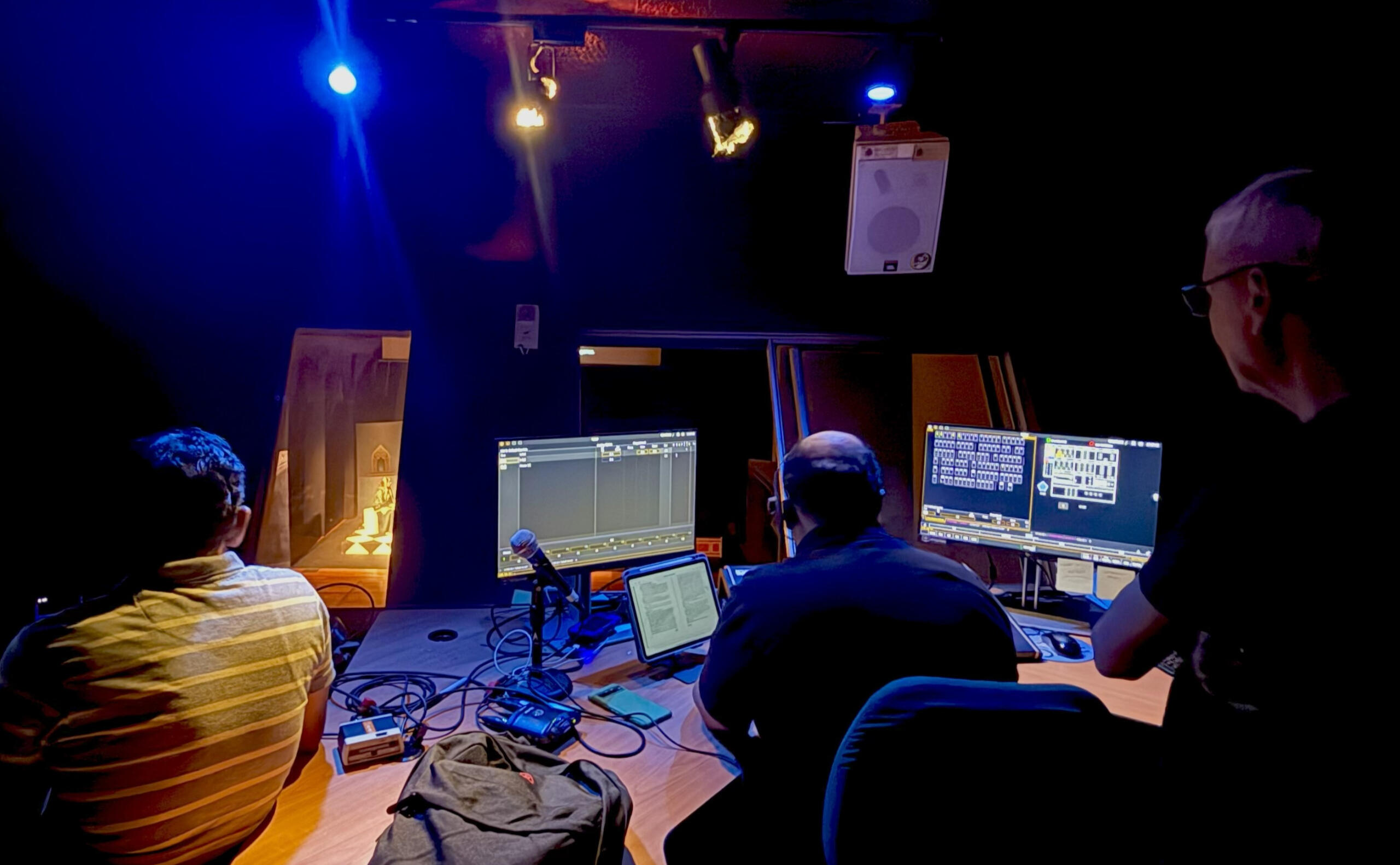Wired for Why
Welcome. I’m Samir, someone who’s spent a few decades walking the path between technology, teams, and transformation.I care about the kind of work that lasts, the kind of conversations that move people forward, and the kind of leadership that stays human, even in a fast-changing world.This space is a reflection of what I’m learning, where I’ve been, and the kind of problems I enjoy thinking through.Glad you’re here.


A Journey in Progress
I didn’t set out with a fixed plan. What I had was curiosity, a strong work ethic, and the good fortune of being around people who gave me room to grow.From early days solving technical problems in server rooms to leading global teams across continents, my path has been shaped more by questions than answers. Questions like: “What does one scale and keep culture essentials intact?”, “How to create value for all stakeholders and be transformative?”, and “What does it take to lead through change?”Over time, I’ve worked with enterprises navigating digital transformation, with startups turning ideas into reality, and with teams trying to find clarity amid complexity. Each phase has been different, but what’s remained constant is a deep respect for people, process, and purpose.I don’t see this as a résumé. It’s a reminder that careers, like people, are shaped more by learning than by titles.
Topics I Think About
These are themes I keep coming back to sometimes in my work, sometimes in conversations, and often in quiet moments between the two.

Creativity Beyond Work
Creativity sharpens how I lead — especially when the path isn’t clear
The more I immersed myself in creative pursuits outside of work, the more I noticed something shift at work. Whether writing a play or designing a festival experience, I was learning how to work with uncertainty, make meaning from chaos, and trust that clarity would emerge through iteration.Creativity has helped me become more comfortable with the unknown, something every leader eventually has to face. It’s taught me to see possibilities where others see dead ends, and to shape ideas even when they’re still messy. Over time, I’ve come to see creativity not as a side pursuit, but as a quiet advantage, especially in high-stakes, ambiguous environments.

Theater
Writing, directing, and producing plays has taught me how to lead without having all the answers upfront. Every production starts with ambiguity, a rough idea, a blank stage, and it becomes something real through collaboration, iteration, and trust. It’s one of the most practical trainings I’ve had in vision, alignment, and execution under pressure.

Expression
Bringing large-scale cultural experiences to life has shaped how I think about experience design, storytelling, and shared purpose. From idea to execution, these projects involve creative problem-solving, constraints, and the challenge of moving people emotionally. It’s helped me lead with more empathy, detail, and imagination.
Conversations That Matter
I’ve worked with founders at turning points, teams navigating growth, and leaders balancing speed with culture. These aren’t one-size-fits-all moments. They require listening, context, and a thoughtful perspective.I do bring context, pattern recognition, and the ability to listen deeply, especially when the stakes are high and the answers aren’t obvious.If you're navigating something crucial and need a thoughtful sounding board, I’m open to the conversation.

Topics I Think About

Leadership in Uncertain Times
Leadership isn’t about having all the answers. It’s about helping others stay grounded when things feel unclear. What's the right time to experiment, and when do you hold steady? Scaling isn't just about speed; it's about sensing change early and adjusting with intent.
Building Cultures That Helps Scale
Complexity is inevitable as an organisation grows. I often reflect on how the right culture functions like an operating system. It should accelerate decision-making, empower teams, and drive consistent outcomes. The real challenge isn't just building a great culture, but scaling it without losing what makes it work.


Getting It Right vs. Failing Fast
I keep wondering, when you're building something meaningful, should the focus be on getting it right the first time or moving fast enough to learn from failure? Maybe both matter. But the balance shifts depending on where you are and who you're building with. I think about this a lot.
Consistent Value Creation in Driving High Impact
In fast-moving environments, big wins often come from doing the basics right again and again. I’ve found that the ability to deliver value consistently, not just occasionally, is what separates good teams from great ones and what truly drives transformation that lasts.


The Kind of People Who Make Teams Work
I've started believing more strongly that with the right intent, mindset, and curiosity, almost everything can be learned. Great teams aren't always built with the most experienced people; they're built with people who want to learn, who help each other grow, and who show up with the right energy, every day.
Books That Stayed With Me
Ideas that shaped how I think, lead, and learnI’ve read many books, but a few have stayed with me — not just for what they said, but for how they made me pause, reflect, and sometimes, rethink.Here are a few I keep returning to:The Goal by Eliyahu M. Goldratt | Good to Great by Jim Collins | The Hard Thing About Hard Things by Ben Horowitz | The Magic of Thinking Big by David J. Schwartz | Outliers by Malcolm Gladwell

Topics I Think About

All Topics
The CEO Rule: Empowering Clear Decisions at Every Level
When an organization grows, it doesn’t just add people; it adds complexity.For a while, everything moved fast. Decisions are sharp, ownership is high, and alignment feels almost instinctive. But as teams grow and structures formalize, something starts to shift. Decisions slow down. People wait. Not because they don’t care, but because they’re not sure if they can take the call.I noticed this during a phase of rapid growth. Revenue was up, teams were expanding, and on paper, everything looked great. But the pace of decision-making had softened. Bottlenecks were forming in places that once moved freely. That bothered me, because it wasn’t a lack of intent. It was a lack of clarity.It made me pause and ask myself: How was I able to take decisions over the years without second-guessing? What were the principles I was unconsciously leaning on?That reflection led to what I now call the CEO Rule, a simple framework that helps anyone in the organization take the right call, even in uncertain situations.C stands for Culture — Are we creating genuine value for our customers and stakeholders?
E is for Ethics — Are we staying true to our values and integrity, even when no one’s watching?
O stands for Organizational Benefit — Does this action move the company forward in the long run?If the answer is yes to all three, take the decision. You don’t need a manager’s sign-off. You have the clarity and the mandate to lead.What I didn’t expect was how empowering this turned out to be. It gave people a clear lens to operate through, not just rules, but trust. It encouraged ownership. And more importantly, it made people feel safe, safe to act, safe to speak up, and safe knowing that the organization had their back when the intent was right.In fast-moving environments, consistency can’t come from approvals. It has to come from principles.In a scaling organization, the real edge isn't just in speed, it's in empowered decisions made at every level.

The Luck Framework: Aspiration, Hustle, and Willpower
IntroductionOver the years, I've often heard people say, "You're lucky things worked out for you." Sometimes I agreed. Sometimes I didn't. And sometimes, I wasn't sure how to respond.It made me reflect, was it really luck? Or was there something behind the moments that worked in my favor?Eventually, I started noticing a pattern. Every time something meaningful clicked, three elements were quietly at play. I wasn't just lucky. I was prepared, focused, and persistent — often without realizing it.That's when this idea began to take shape.The InsightWhat people call "luck" is often a result of three forces working together. The Luck Framework,
a simple, repeatable combination I now rely on:1. AspirationA clear target. Something you want to achieve, become, or build. It could be a sales goal, a promotion, a creative dream, or something personal. Without aspiration, effort has no direction.2. HustleThe effort you put in learning, experimenting, building, failing, and showing up. Hustle isn't just doing more; it's doing what moves you closer to your aspiration.3. WillpowerThe belief that it will happen. Willpower is what keeps the hustle going when the results are delayed. It brings focus, energy, and emotional fuel when things don't work immediately.When aspiration, hustle, and willpower all three align, success becomes more than an accident. It becomes repeatable. It starts looking like "luck" to others.Why This MattersThis framework helped me reframe both success and failure. When something worked, I could trace it back to all three being active.
When something didn't work, I often found one of the three missing.And that clarity has helped me move forward with more intention, less noise.It also changed how I view others' success not as chance, but as alignment.Closing ThoughtI've stopped thinking of luck as random. Instead, I've come to see it as a byproduct of aspiration, hustle, and willpower working together over time. When those three are in place, you don't just get lucky.You build your own momentum

The Three Layers of Growth: From Functional to Strategic Impact
Over the years, I've often found myself reflecting on a simple question: Why do some people seem to grow rapidly within an organization, while others plateau even when both work equally hard? The answer, at least in my experience, lies in a pattern I've observed across many teams, and personally lived through.It's become a framework I come back to often three layers of professional growth that help anyone become more valuable, resilient, and ultimately, irreplaceable.Layer 1: Functional Excellence
Let's start at the foundation, the functional level. This is the domain you were hired for.If you're a Java developer, it's your ability to write clean, efficient code. If you're an HR manager, it's your depth in compliance, policy, talent processes, and frameworks. Whatever your role, this is your core craft.Often, this layer is underestimated. Some assume they can "manage" without mastering their functional area. In my experience, that only leads to fragile confidence and surface-level performance. I've seen that the strongest leaders — the ones others trust — are those who first grounded themselves in their functional expertise.
Because without this, anything you build on top tends to wobble.Layer 2: Operational Maturity
Once you've built a strong functional base, the next step is operational maturity, figuring out how to scale what you do, make it repeatable, and bring consistency to outcomes.This layer is where you shift from being an individual contributor to a multiplier.Let's say you're still that Java developer. You're writing good code — great. But now you're also reaching out to others upstream and downstream in the workflow, understanding dependencies, writing reusable components, and proactively reviewing architecture decisions. You're not just coding, you're contributing to flow.Or let's take the HR manager. Now you're thinking about how to structure your team, should you split between HR operations and HRBP roles? Should onboarding and compliance be centralized? You're orchestrating HR, not just executing it.At this layer, you're no longer just meeting expectations you're exceeding them. You're someone the team can rely on to make things run smoother, faster, and better.Layer 3: Strategic Contribution
The final layer is where the real magic happens - strategic thinking.
This is where you start to look beyond your function or even team, and begin to add value to the organization or the customer in meaningful ways.Let's revisit our examples:
That developer? They're no longer just contributing to the current sprint. They're identifying modular patterns, contributing to internal tools, helping accelerate time-to-market for the entire org. They're anticipating architectural issues before they surface.That HR manager? They've introduced process changes that reduce hiring lead time by 40%. Or rolled out a compensation model that aligns better with performance outcomes.Strategic thinking is about looking at time, cost, and quality, and improving at least one without compromising the others. When you operate here, you're not just doing your job, you're shaping how the job itself evolves.The Rule I Learned: Always Build, Never Abandon
One thing I've seen go wrong is when people jump to strategy too soon, or get stuck managing processes, without ever mastering the basics of their function.That doesn't work. Strategy isn't a shortcut; it's a compound effect.
So here's what I've learned the hard way:
Always build on your functional expertise. Never abandon it.
Your confidence, credibility, and clarity stem from that foundation, and everything else builds upon it.Why This Matters
In a fast-moving organization, roles change. Teams shift. Priorities evolve. But if you operate with this layered mindset, you never need to worry about "what's next"; you're always building in that direction.
In my experience, people who grow across these three levels —functional, operational, and strategic — don't just thrive; they elevate everyone around them. They're the ones who are trusted with the hardest problems and the most ambiguous situations. They lead with clarity, not just because of their title, but because of their perspective.
And the best part? You don't need to wait for permission to start.

More Blogs Coming Soon...
Image Gallery

Theater and Expressions
Coming Soon...